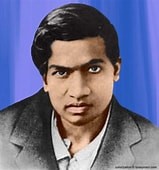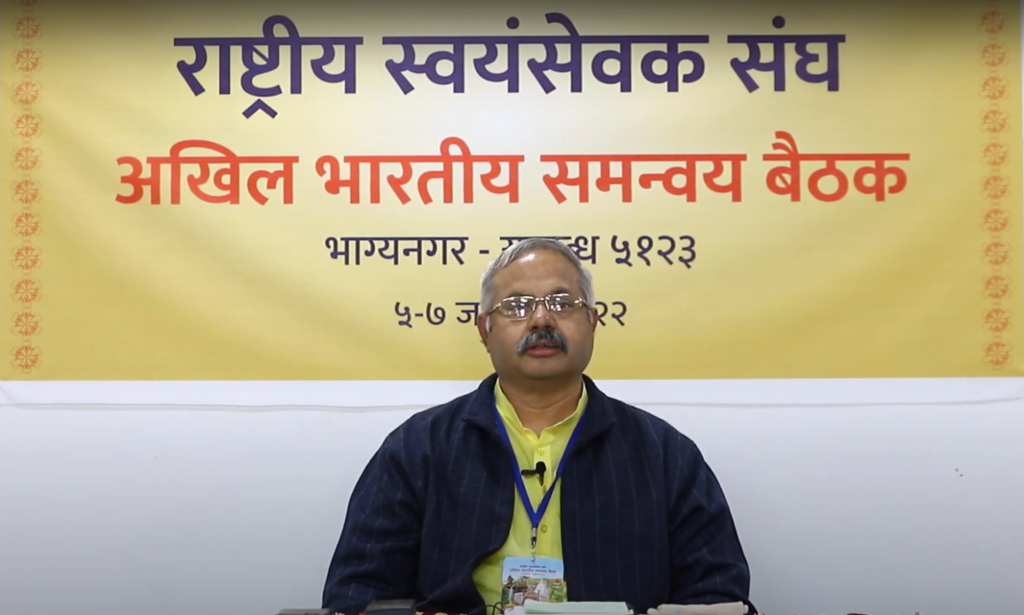
Yugapurush, as the word indicates, are born few and far between in a millennium. That is how we are blessed with one Swami Vivekananda, one Adi Shankaracharya, one Mahatma Gandhi in the previous millennium. Another such rare gem is the renowned mathematician, S Ramanujan.
Srinivasa Ramanujan, whose 134 th birth anniversary falls on Dec 22, 2021 was born on December 22, 1887 at Erode, India, to Sri K Srinivasa Iyengar and Smt Komalatammal. He was an Indian mathematician par excellence whose contributions to the theory of numbers include pioneering discoveries of the properties of the partition function. Ramanujan is remembered for his unique mathematical brilliance, which he had largely developed by himself. In 1920 he died at the age of 32, generally unknown to the world at large but recognized by mathematicians as a phenomenal genius, without peer since Leonhard Euler (1707–83) and Carl Jacobi (1804–51).
Ramanujan had very humble beginnings and was sent to a school in Kumbakonam. He was brilliant in Mathematics right from school days and was not interested in other subjects when he went to Pachaiyappa’s College, Madras (Chennai was Madras then).
Ramanujan had completely mastered a book on advanced trigonometry written by S.L. Loney by the age of 13. By that age, the child prodigy had developed sophisticated theorems of his own.
By the age of 14, he was a recipient of various academic awards and merit certificates. During this time, he had completed most of the mathematics in half the time.
At 16, he came across a book called ‘A Synopsis of Elementary Results in Pure and Applied Mathematics’ by G. S. Carr. This was a turning point and he studied the book in detail which had a collection of 5,000 theorems and mathematical facts. After completing his bachelor degree, he got a job in the Madras Port Trust helped by some friends.
He pursued his interest in Mathematics. In 1911 he published the first of his papers in the Journal of the Indian Mathematical Society. His genius slowly gained recognition, and in 1913 he began a correspondence with the British mathematician Godfrey H. Hardy that led to a special scholarship from the University of Madras and a grant from Trinity College, Cambridge.
Overcoming his religious objections, Ramanujan traveled to England in 1914, where Hardy tutored him and collaborated with him in some research. Ramanujan’s knowledge of mathematics (most of which he had worked out for himself) was startling. Although he was almost completely unaware of modern developments in mathematics, his mastery of continued fractions was unequaled by any
living mathematician. Ramanujan left behind three notebooks and a sheaf of pages (also called the “lost notebook”) containing many unpublished results that mathematicians continued to verify long after his death.
He had been allowed to enrol in June 1914 despite not having the proper qualifications. On 16 March 1916 Ramanujan graduated from Cambridge with a Bachelor of Arts by Research (the degree was called a Ph.D. from 1920, he missed by a whisker being addressed Dr Ramanujan though he was much more).
His life was hard as can be seen from this excerpt in reply to Prof Hardy’s letter, “I have found a friend in you who views my labours sympathetically. … I am already a half starving man. To preserve my brains, I want food and this is my first consideration. Any sympathetic letter from you will be helpful to me here to get a scholarship either from the university of from the government.”
He could not cope up with the harsh climate of England and fell sick. He was diagnosed with tuberculosis. Talking about his illness, Hardy wrote, “Like all Indians he is fatalistic, and it is terribly hard to get him to take care of himself.”
When his health improved in 1918, Hardy wrote, “I think we may now hope that he has turned to corner, and is on the road to a real recovery. His temperature has ceased to be irregular, and he has gained nearly a stone in weight. … There has never been any sign of any diminuation in his extraordinary mathematical talents. He has produced less, naturally, during his illness but the
quality has been the same.
….
He will return to India with a scientific standing and reputation such as no Indian has enjoyed before, and I am confident that India will regard him as the treasure he is. His natural simplicity and modesty has never been affected in the least by success – indeed all that is wanted is to get him to realise that he really is a success.”
As destiny would have it, he could not survive for long and passed away in 1920. He was probably born a century ahead. Just imagine what he could have achieved in these days of instant communication and collaborative work. We are poorer to that extent.
K Sureshkumar

